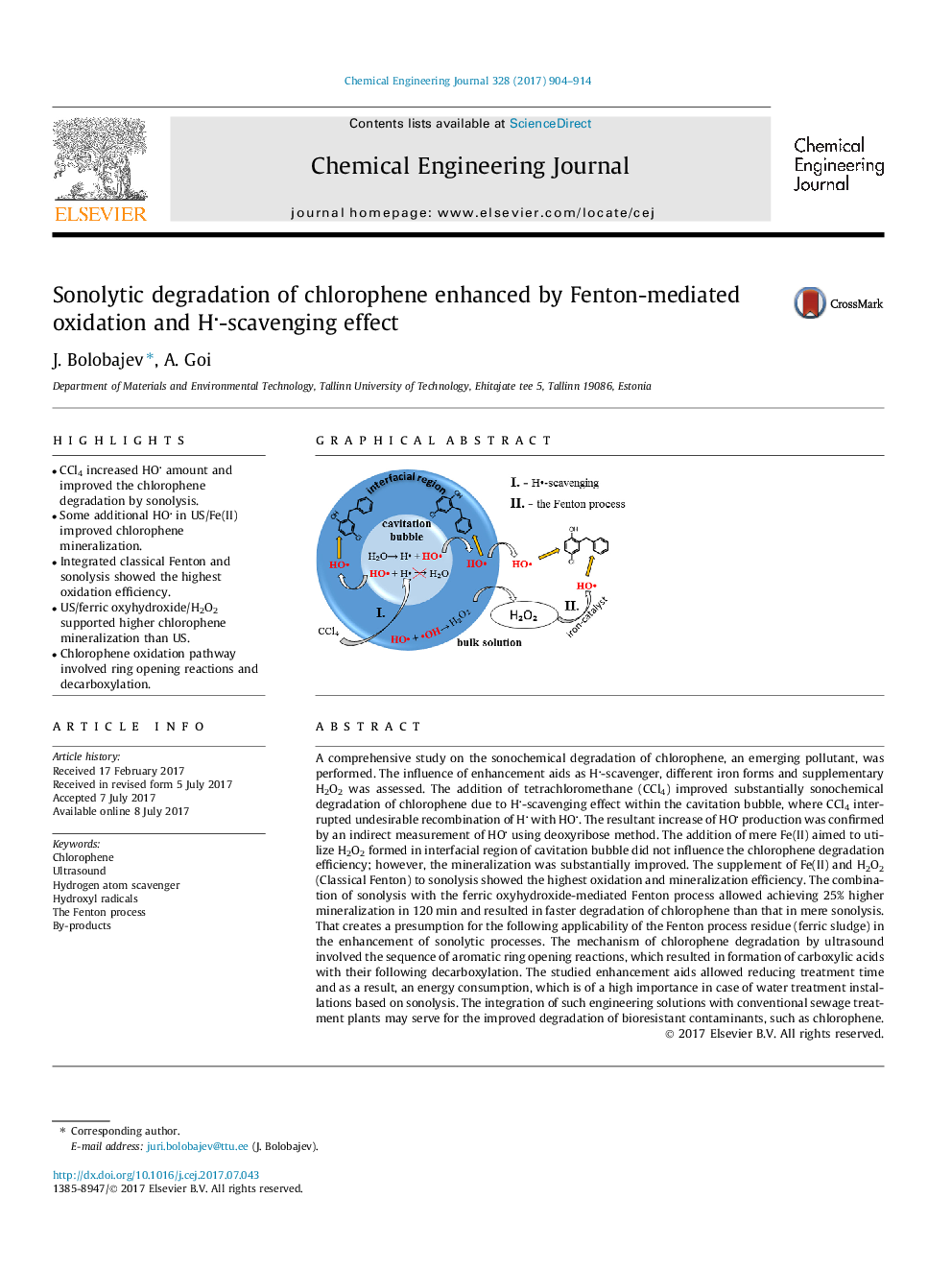| کد مقاله | کد نشریه | سال انتشار | مقاله انگلیسی | نسخه تمام متن |
|---|---|---|---|---|
| 6465295 | 1422950 | 2017 | 11 صفحه PDF | دانلود رایگان |

- CCl4 increased HO amount and improved the chlorophene degradation by sonolysis.
- Some additional HO in US/Fe(II) improved chlorophene mineralization.
- Integrated classical Fenton and sonolysis showed the highest oxidation efficiency.
- US/ferric oxyhydroxide/H2O2 supported higher chlorophene mineralization than US.
- Chlorophene oxidation pathway involved ring opening reactions and decarboxylation.
A comprehensive study on the sonochemical degradation of chlorophene, an emerging pollutant, was performed. The influence of enhancement aids as H-scavenger, different iron forms and supplementary H2O2 was assessed. The addition of tetrachloromethane (CCl4) improved substantially sonochemical degradation of chlorophene due to H-scavenging effect within the cavitation bubble, where CCl4 interrupted undesirable recombination of H with HO. The resultant increase of HO production was confirmed by an indirect measurement of HO using deoxyribose method. The addition of mere Fe(II) aimed to utilize H2O2 formed in interfacial region of cavitation bubble did not influence the chlorophene degradation efficiency; however, the mineralization was substantially improved. The supplement of Fe(II) and H2O2 (Classical Fenton) to sonolysis showed the highest oxidation and mineralization efficiency. The combination of sonolysis with the ferric oxyhydroxide-mediated Fenton process allowed achieving 25% higher mineralization in 120Â min and resulted in faster degradation of chlorophene than that in mere sonolysis. That creates a presumption for the following applicability of the Fenton process residue (ferric sludge) in the enhancement of sonolytic processes. The mechanism of chlorophene degradation by ultrasound involved the sequence of aromatic ring opening reactions, which resulted in formation of carboxylic acids with their following decarboxylation. The studied enhancement aids allowed reducing treatment time and as a result, an energy consumption, which is of a high importance in case of water treatment installations based on sonolysis. The integration of such engineering solutions with conventional sewage treatment plants may serve for the improved degradation of bioresistant contaminants, such as chlorophene.
73
Journal: Chemical Engineering Journal - Volume 328, 15 November 2017, Pages 904-914